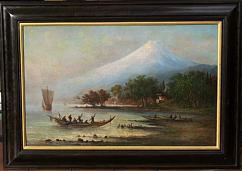
|
|
|
|
Fritz G. Melbye
(Danish, 1826-1869) |
* Photo Copyright is with the FineArtEmporium
*
|

|
|
|
|
Fritz G. Melbye
(Danish, 1826-1869) |
* Photo Copyright is with the FineArtEmporium
*
|
Presented by the FineArtEmporium in Hamburg.
Notes: Other names for this Mountain are Fujisan, Fuji-san and Mount Fuji.
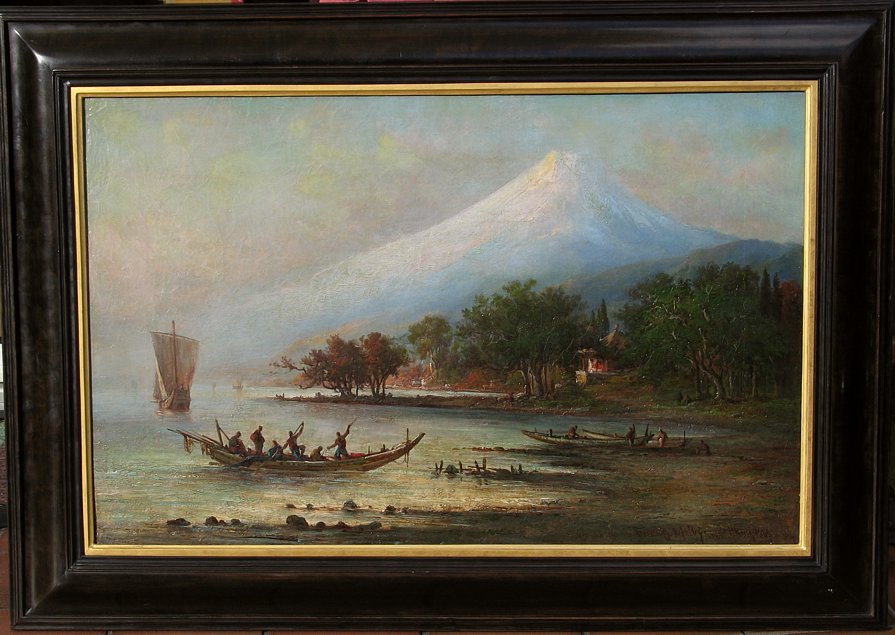
|
|
Fritz G. Melbye (Danish,
1826-1869) - Marine
Painting with Shipping off the Fuji-jama, Japan 1869 -
Photo Copyright is with the Fineartemporium - Go back to our For Sale Category |
Fritz Melbye received an art training by his older brother Anton Melbye before he departed in 1849 to the Carribean Island of St. Thomas, where he convinced the French Impressionist Camille Pissarro (1830-1903) to become a full-time artist and was his first teacher. Together with Pissarro he went in 1852 to Venezuela where he stayed in Caracas until 1856. John Rewald writes about him in the book "The History of Impressionism". Later he lived in Paris for two years (1856-1857) and in New York from 1861-1863 and visited China, where he stayed in Peking and Ho Yuan. He died young in Shanghai 1869. His marine and topographical paintings show - apart from some Danish motifs - a lot of most interesting motifs from his extensive stays and travels abroad. There were hardly European artists in the mid 19th Century who depicted motifs from St. Thomas, St. Croix, Cuba, Santo Domingo, Venezuela, Newfoundland, China and Japan. In Peking he was commissioned to paint the Imperial Summer Palace and in his American period he exhibited at the Pennsylvania Academy of Fine Art. From 1849 until 1858 he was an exhibitor at Charlottenborg Castle in Denmark. Several museums world-wide hold his works. During his Far Eastern period he depicted also some Japanese motifs, a marine painting in the Sonderborg Castle Museum and this Topographical Marine painting shown here.
This work shows as a background the Symbol of Japan - the Fuji - which is the highest mountain in Japan and one of the most beautiful mountains of the world. It is a scarce motif since not many Western Artists painted Japanese motifs in the mid 19th Century. Prices for Fritz Melbye paintings with Danish Motifs start at some Thousand EUR, but topographical paintings by him are highly appreciated by collectors world-wide and works of similar dimensions were sold in London, Kopenhagen and New York for as much as British Pounds 30,000 or US$ 60,000 or Danish Krons 320,000 or JPY 4,8 Million.
Following are shown some more photos of the painting (which were taken under full sunlight exposure):
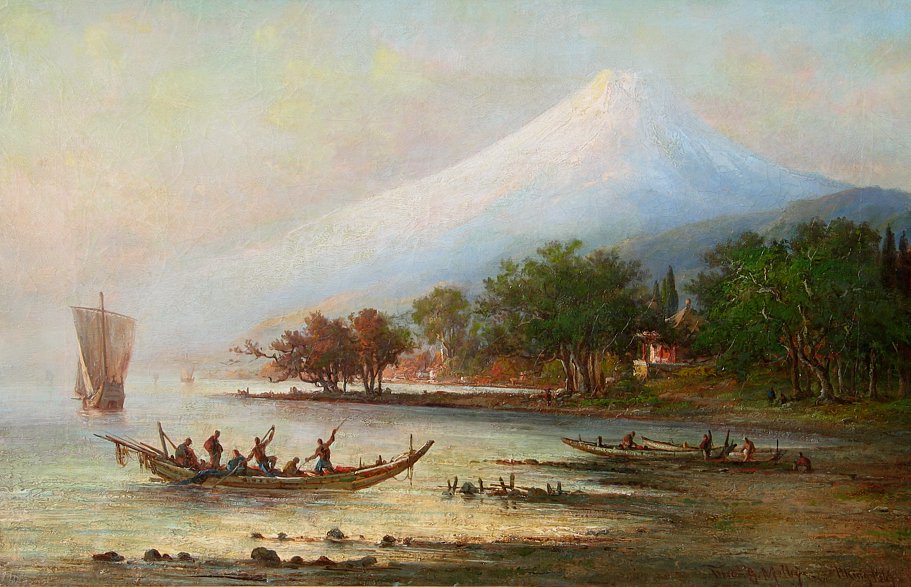 *
*
and some detail photos:
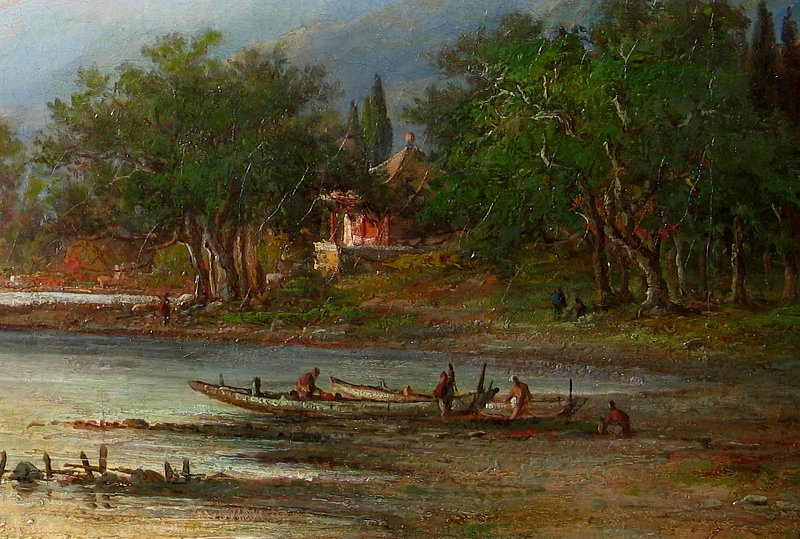
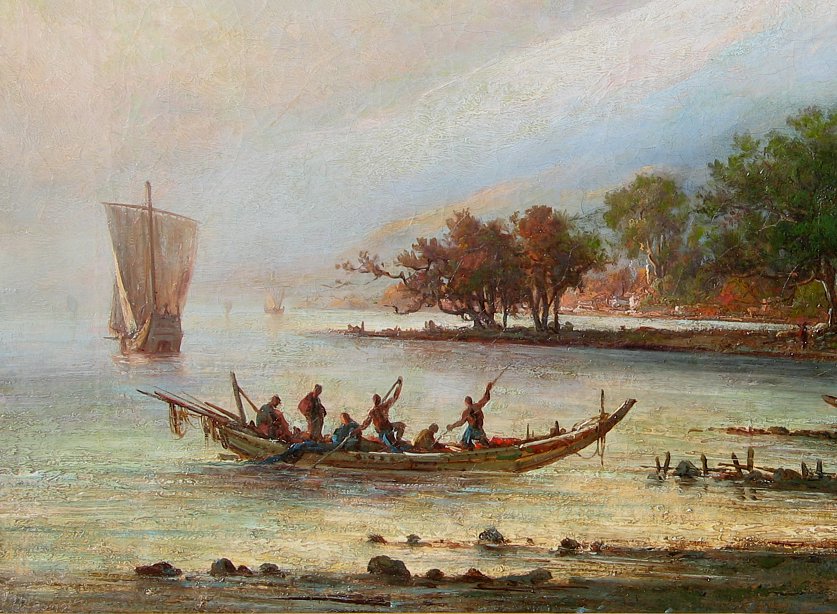

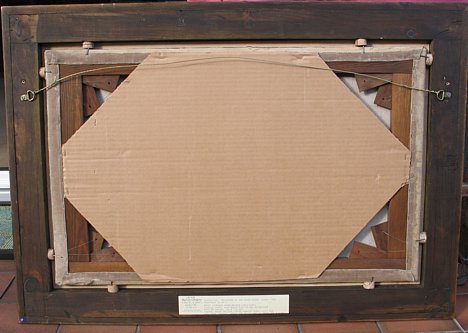 *
*
Provenance: On the backside can be found a label from Martyn Gregory of St. James in London, a leading China Trade Specialist (www.martyngregory.com). This painting was shown in his summer exhibition 1990 and had the No. 37 in his Catalogue 56.

The best viewing distance for this painting is about 8 to 10 feet and a good light on it is recommended. Suitable for an Office or Living Room or Private Library or onboard of a Yacht / Cruise Ship.